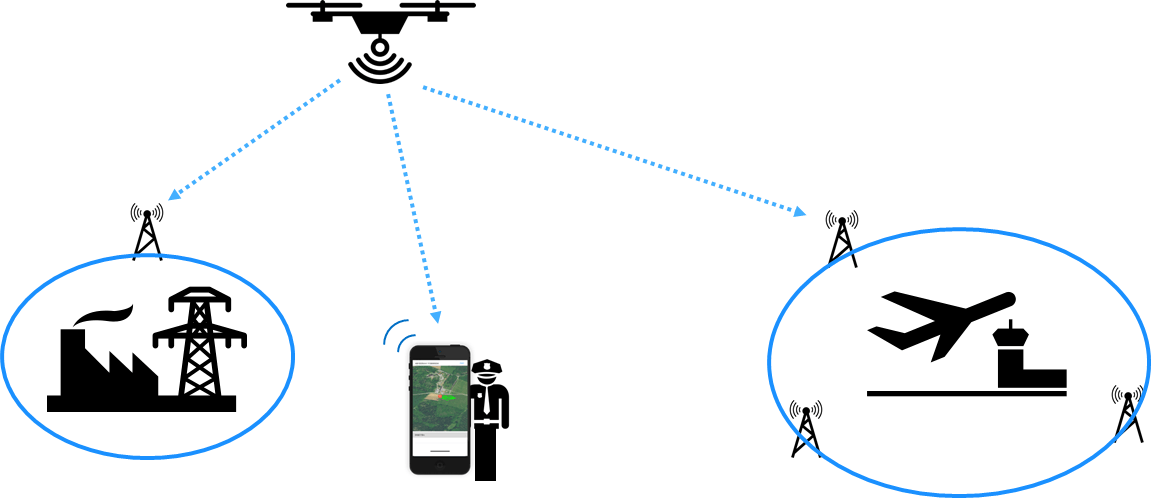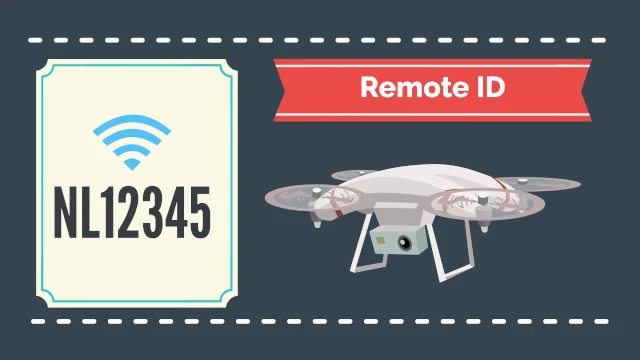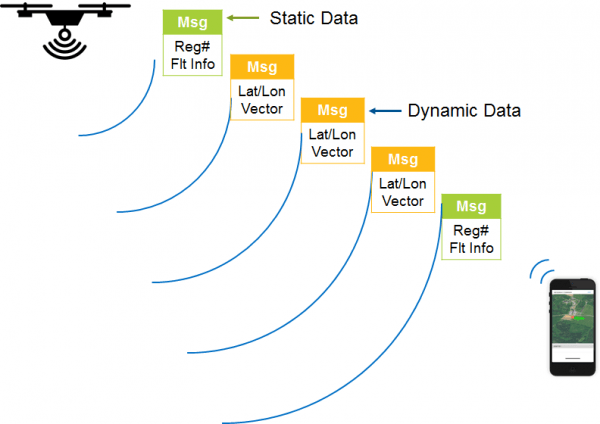Remote Identification or in short Remote ID, adds “beacon” capability to drones where it broadcasts basic information of airborne drones, such as current position, purpose and operator. Basically, it is a wireless number plate for drones! The EU and USA are planning new rules that make Remote ID mandatory for drones over 250 grams weight. Technically Remote ID is called Direct Remote ID (DRI) in the EU and Broadcast Remote ID in the USA. The beacon information can be used by general public, law enforcement and drones to give better situation awareness of the airspace around them.
Applications
Remote ID has several applications. First, drone manufacturers need to be compliant with the upcoming regulations. Second owners of legacy drones need to install a Remote ID transponder. On the other hand, the applications of Remote ID receivers are in the area of security and safety. It can be security intelligence firms that are interested in nearby drones. Or airports that want to detect nearby drones to avoid unsafe situations.

source: https://www.opendroneid.org/

The better alternative for DJI Aeroscope
DJI Aeroscope is a proprietary solution of DJI to track the position of nearby DJI drones. It is designed for public safety. If the police needs to monitor DJI drone activity in an area and track down their pilots, it’s as simple as planting a Aeroscope receiver and monitoring the signals. DJI Aeroscope signals can’t be switched off by users. The down side is that during wars, the same system can also be used to track the position of enemy DJI drones and pilots(!). Remote ID is the better alternative, because the technology is open, defined in international standards. Moreover, the user has full control about the Remote ID signals, Remote ID can be switched off during wars. Finally with Remote ID all drones can be tracked and not only DJI drones.
Technical background
Remote ID versus network Remote ID
Besides direct or broadcast Remote ID, there is also network Remote ID. In network Remote ID the drone sends real-time information directly to UTM (Unmanned Aircraft System Traffic Management) using mobile internet. Here, at dronescout.co Remote ID means direct or broadcast Remote ID. We do not provide network Remote ID products.
International standards
For (direct/broadcast) Remote ID there exists several standards. In Europe, there is the DIN EN 4709-002 standard that describes the Direct Remote Identification (Remote ID) for Unmanned Aircraft Systems. In the USA the relevant standard is the ASTM F3411-22-RID-B. Both standards are very similar and there are only small differences. Our products use internally the Open Drone ID framework. This framework supports both standards.
Transmission technology
Both Remote ID standards are using several transmission technologies: Bluetooth Legacy Advertisements, the new Bluetooth 5 (long range) Advertising Extensions and WiFi implementation advertisements based on NAN (Neighbor Awareness Network) or Beacon protocol. The transmitted information (messages) is divided into static and dynamic data. Static data is broadcast less frequently than dynamic data. These messages are connectionless advertisements and do not require any acknowledgement from the receiver.

source: https://www.opendroneid.org/
